
Liles planted in the garden, for maximum impact.
These two late flowering bulbs and corms, can add a splash of colour after earlier spring flowering plants are over and they can be used as under planting so they grow through other plants. With scent and razzmatazz they are more than just cut flowers, there are varieties that can work well in mixed planting and make your late summer garden sing. Here are some to try.
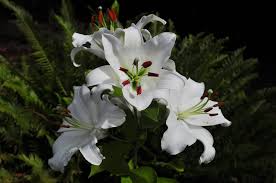
Lilium ‘Casa B;anca’
Lilium Casa Blanca: This is a reliable and wonderful lily with large open white flowers on tall 1.30m stems with a powerful heady scent. July – August. Makes a superb cut flower.
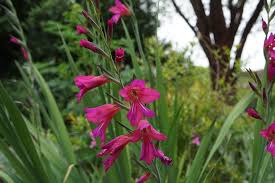
Gladiolus byzantinus
Gladiolus byzantinus: This late spring flowering ‘glady’ has a more delicate look than the later summer ‘cutting flower’ varieties. Tall dusky dark green foliage with flower spikes up to 60cm tall, of deep purple. Wonderful in a mixed planting with purple Alliums.
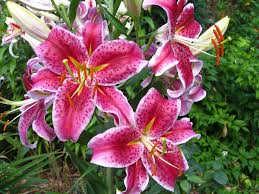
Lilium ‘Stargazer’
Lilium Stargazer: This is a classic lily with lots of wow facture open star like flowers in maroon and pink, with dark spots along the petals and with tipped edges. With a sweet scent added for good measure. At 90cm high good for a mid-boarder position. Flowering July-August.

Gladiolus colvillei ‘The Bride’
Gladiolus colvillei The Bride: An elegant selection of pure white flowers opening up a stem to 50cm in height. Flowering in July.
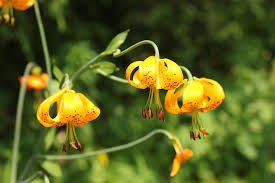
Lilium ‘Sunny Morning’
Lilium Sunny Morning: These hybrids are often called turk-cap lilies With a display of flowers produced along the stem and and often opening in supersession. A tall selection at 1-1.5m in height with a mass of orange-yellow flowers. The petals curl back under to reveal the spotted base of the petals and bright orange stamens. Flowering June -July
Sadly there is no free from copyright image to illustrate this plant.
Gladiolus narus Elvira: This is a dramatic ‘glady’ with tall flower stems up to 75cm in height. Pale pink flowers with red base blotches and soft yellow stamens. Packs a late flowering punch in August.
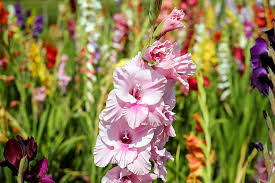
A mix of colourful Gladiolus
Top Tips: Both Gladiolus and Lilium, need a good sunny spot on free draining soil. They do well in poor soils. Do not allow to get water logged. Unfortunately slugs and snails love lilies in particular so watch out for signs of attract from early spring onwards. Also lily beetle is on the increase and is now wide spread across southern counties. So look out for the beautiful shiny red beetled adults, laying eggs on the lily stems in early summer. It is the hatched young that cause the damage. Turning the stems and leaves into mushy mess. Contact your local garden centre or plant nursery for advise on both chemical and organic control measures for both of these common garden pest.
I hope I have inspired you to add both these late flowering ‘Drama Queens’ to your garden planting scheme.
